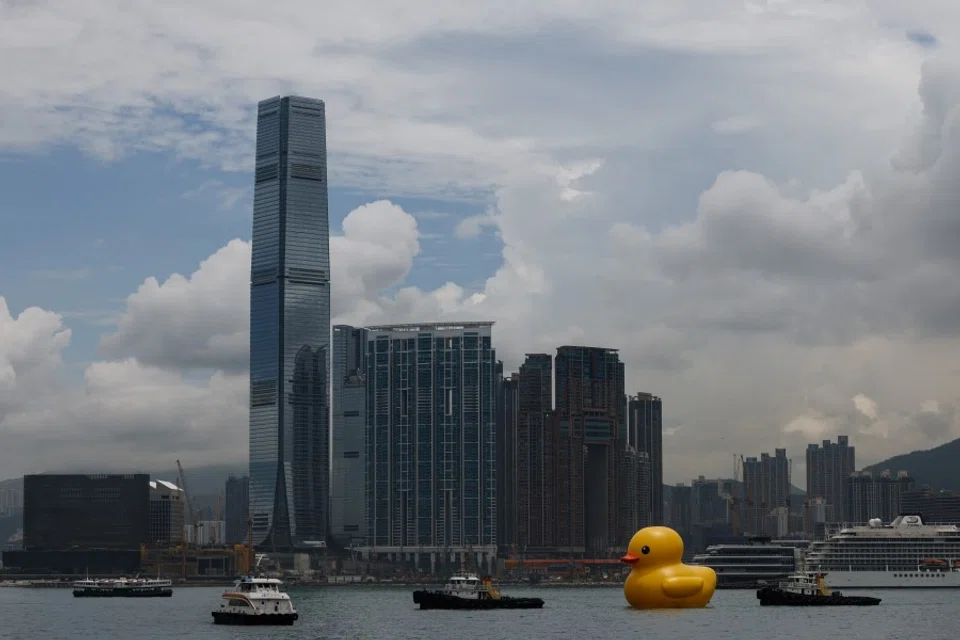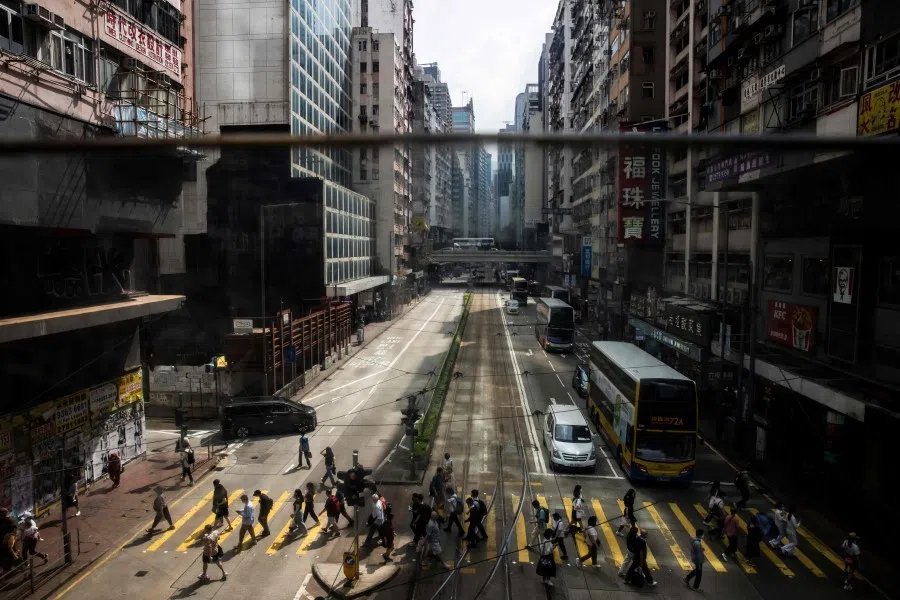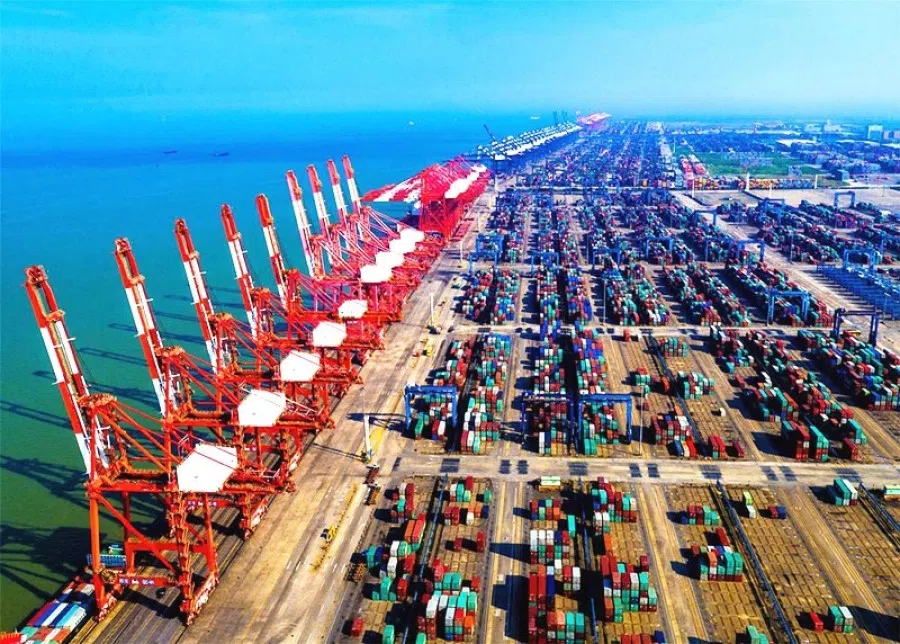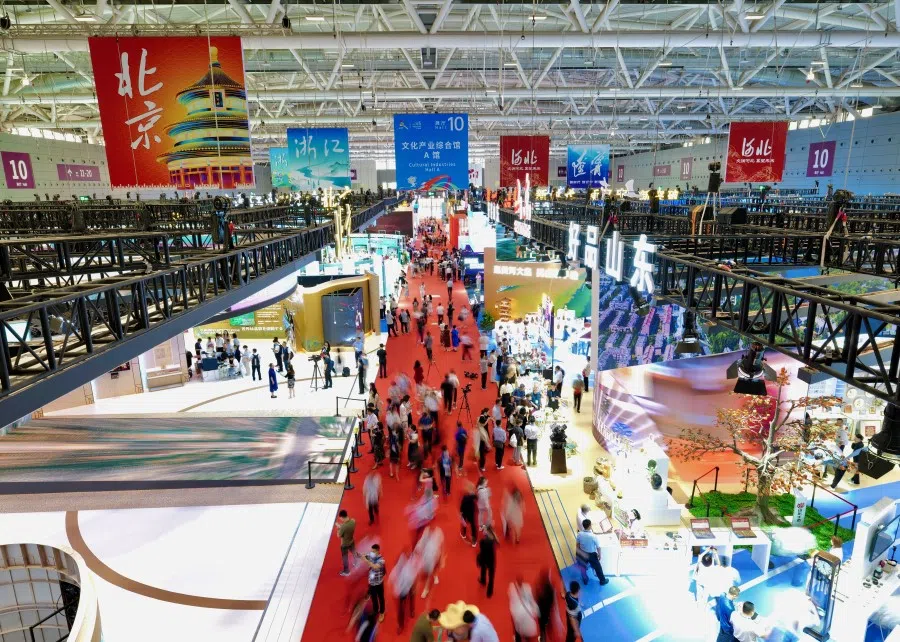Integrating Hong Kong into China's Greater Bay Area: Easier said than done?
Greater prosperity in the Guangdong-Hong Kong-Macau Greater Bay Area would require greater synergising and complementarity between the core leading cities of Hong Kong, Shenzhen and Guangzhou. But this is easier said than done, especially for Hong Kong. EAI senior research fellow Yu Hong explains.

The Guangdong-Hong Kong-Macau Greater Bay Area (GBA) is one of China's two main economic powerhouses alongside the Yangtze River Delta Region (YRD). The GBA and YRD regions both dominate the nation's trade and inflow of foreign investment, based on advantages of coastal geography, availability of advanced infrastructure networks, agglomeration of manufacturing industries, and abundant resources of human and technology which are unparalleled by any other regions in the nation.
The GBA remains as one of the most competitive integrated clusters in China on account of its contribution to national GDP and its strong research and innovation capability. The GBA development initiative, moreover, is important to sustaining Hong Kong's economic growth.
Since 1997, Hong Kong's exports and investment flows have become increasingly concentrated on the mainland, accounting for more than 60% of Hong Kong's exports of goods. The development plan of the GBA provides Hong Kong with access to a huge but also fast-growing market. The combined GBA economy is estimated to be worth around US$1.7 trillion and the population is over 70 million, which makes it the 12th largest economic cluster in the world.

Closer integration among the GBA cities a work in progress
The GBA development initiatives require the repositioning of Guangdong, Hong Kong and Macau as a single economic entity based on closer economic cooperation and elimination of the various institutional and non-institutional barriers that hinder the free mobility of people, goods and resources. To truly facilitate free mobility and movement of people within the GBA, cities must be able to provide basic social welfare of a similar standard for all citizens.
In reality, implementing the GBA development plan is work in progress, and it currently offers fewer benefits to the GBA's cities than many anticipated.

As it is today, however, there are still significant differences in local governments' spending on social welfare, education, and healthcare among the GBA cities. Measured as a percentage of GDP, Hong Kong's spending on social welfare, healthcare and education is still much higher than that of any of the mainland cities. The challenge, therefore, is to eliminate such disparities and integrate all GBA cities into one unified economic block. There is still a long way to go to achieve harmonisation of public goods provision (e.g. healthcare and education) among citizens, infrastructure connectivity, cross-border regulatory frameworks, administration, immigration and customs policies.
The GBA has the most complex governance structure. Guangdong, Hong Kong and Macau have separate political systems and custom zones with hard borders, different institutional, legal and governance systems, and different currencies, which present major barriers to further integration. In reality, implementing the GBA development plan is work in progress, and it currently offers fewer benefits to the GBA's cities than many anticipated.
Competition for dominance among the GBA cities
The GBA's uniqueness derives from the influence of its three leading or core cities, namely Hong Kong, Shenzhen and Guangzhou. These three leading cities benefit from economic, industrial and political resources which far exceed those enjoyed by any other city within the GBA. This situation of three core cities spearheading regional economic cooperation is also unique throughout the world. Hong Kong, Shenzhen and Guangzhou have achieved similar economic importance based on their GDP, whilst the synergistic and complementary effects among the three core cities have not been fully utilised.
Shenzhen and Guangzhou are competing with Hong Kong to be the dominant player and driving force of the GBA.
The fierce competition for dominance among Hong Kong, Shenzhen and Guangzhou could jeopardise efforts to forge closer economic integration in the region and lead to widening regional division in terms of the development direction of the GBA. The relations between Hong Kong and the Guangdong cities have, since the 1980s, been characterised as "front shop and back factory"; nevertheless, the cities in Guangdong are no longer content to be regarded just as the "back factory" of Hong Kong. Shenzhen and Guangzhou are competing with Hong Kong to be the dominant player and driving force of the GBA.
The contest for dominance of container ports' development in the region is such a case in point. For many years, the container ports of Shenzhen and Guangzhou have competed with Hong Kong in world rankings on the volume of containers handled, which is a reflection of the cities' competitiveness in infrastructure connectivity and seaport development.

Leveraging its free port and serving as China's gateway to the world, Hong Kong once dominated the foreign trade in the region and its port led the rankings, whilst Shenzhen and Guangzhou were nowhere to be seen on the ranking list. However, in the past few years, both Shenzhen's Yantian Port and Guangzhou's Nansha Port have successively overtaken Hong Kong in terms of the volume of container trade handled.
Fast rising Shenzhen
According to the "Top 50 Container Ports" list published in 2020 by the World Shipping Council, Shenzhen and Guangzhou were recorded as having container handling capacity of 26.6 million TEUs and 23.2 million TEUs, respectively, which exceeded Hong Kong's 18.0 million TEUs. Interesting to note is that three ports in the GBA were ranked among the world's top 10 container ports. Shenzhen's Yantian Port and Guangzhou's Nansha are the third and fourth largest ports in the world, respectively, whilst Hong Kong is the ninth largest port.
In 1997, when Hong Kong was returned to China, its GDP amounted to US$177.4 billion. At that time, Shenzhen's recorded GDP was equivalent to only one-tenth of that of Hong Kong. In the early years of the handover, Hong Kong, with its great economic strength, amplified its powerful position relative to neighbouring Guangdong. However, Shenzhen surpassed Hong Kong in GDP for the first time in 2018, which indicated a historic reversal in the relative power of Hong Kong and Shenzhen, as well as the power relation between Hong Kong and the mainland.
Shenzhen's rapid economic growth can largely be attributed to its development of a knowledge-based economy powered by innovation and its high-tech sector. Compared to the corresponding figure of roughly 1% in Hong Kong, Shenzhen's R&D spending accounted for over 4% of its GDP in 2019. Furthermore, many of China's leading high-tech firms such as BYD, Huawei, DJI and Tencent are based in Shenzhen.
Any shift in the economic power dynamics would require Hong Kong to handle its relations with the mainland, especially the GBA cities, with a more equal mentality, but this is easier said than done.

The institutional arrangement of the Central Leading Group for the Development of the GBA under the Chinese central government reflects the equality in the balance of power between Guangdong, Hong Kong and Macau in the decision-making process concerning the development of the GBA.
The Leading Group is chaired by the executive prime minister of the State Council, whilst the chief executive of the Hong Kong and Macau Special Administrative Regions and the governor of Guangdong province are members of this Leading Group, enjoying equal rights to know, speak and make decisions, and shouldering the main responsibility of promoting the development for the GBA. The three parties discussed the development plans of the GBA through high-level meetings, joint meetings, co-operation liaison offices, and research task forces.
Hong Kong's superior mindset
Any shift in the economic power dynamics would require Hong Kong to handle its relations with the mainland, especially the GBA cities, with a more equal mentality, but this is easier said than done. The recent incident involving Cathay Pacific's discrimination against mainland passengers reveals the resistance among many Hongkongers towards the integration of Hong Kong with the mainland.
The airline's flight attendants were accused of verbal discrimination against mainland passengers on board the Cathay Pacific flight from Chengdu to Hong Kong on 21 May 2023. A Chinese mainland netizen reported on a social networking site that this discrimination was directed at non-English-speaking passengers. The incident attracted great attention and sparked public outcry among mainland citizens. Even People's Daily, an official newspaper, said that it was shocked by the incident.

Cathay Pacific's chief executive officer expressed his sincere apologies three times to the affected passengers. He also said that the airlines will start recruiting trainee pilots and flight attendants in the GBA to cater to the needs of mainland Chinese passengers. Concerned over Hong Kong's relations with the mainland, Hong Kong Chief Executive John Lee also responded to the incident, saying that he had raised the matter with the senior management of the airline as a 'serious incident' and warned that similar situations must not be repeated. He claimed that the crew members have shown disrespect to passengers, spoken badly and done badly, and hurt the feelings of Hong Kong and mainland compatriots.
The Cathay Pacific incident took place against the backdrop of attitudinal differences between the people of the two places, namely the Hong Kong people's feelings of superiority over mainlanders, and their deepening dissatisfaction with mainland Chinese in recent years.
Maintaining the relative legal and regulatory independence of Hong Kong and Macau may be crucial to their special economic status, as well as to the connectivity of the GBA with the outside world.
A delicate balance
Hongkongers feel that most of Hong Kong's policies have focused on deepening integration in the GBA, whereas emphasis should also be placed on strengthening Hong Kong's uniqueness. Failure to maintain its political and economic uniqueness also means that public support in Hong Kong for further integration into the GBA has diminished. Maintaining the relative legal and regulatory independence of Hong Kong and Macau may be crucial to their special economic status, as well as to the connectivity of the GBA with the outside world.

GDP is only one of the indicators by which to measure the comprehensive strength of a city, and Shenzhen has a long way to go to surpass Hong Kong in all-round terms. Shenzhen still has deficiencies in terms of per capita GDP, urban management, internationalisation, and rule of law, while Hong Kong retains its competitiveness in the fields of investment, finance, and commerce.
Forging closer collaboration and having a clear division of labour among the core cities are the only viable options for achieving closer economic integration of the GBA and improving its regional competitiveness.
Having said that, the hard truth is that Hong Kong's once dominant role in the region has been substantially undermined, and it is being challenged by the rise of Shenzhen as well as the revitalisation of Guangzhou over the last decade. Forging closer collaboration and having a clear division of labour among the core cities are the only viable options for achieving closer economic integration of the GBA and improving its regional competitiveness.
Hong Kong has world-renowned universities, such as the University of Hong Kong, whereas Shenzhen has no world-renowned universities or scientific research institutions, which is a shortcoming that restricts Shenzhen's sustainable development. However, Hong Kong has comparative advantages in terms of basic research and talent training in academia. These advantages could be utilised to complement Shenzhen's economic strengths, and its advantages in technology adoption and application.





